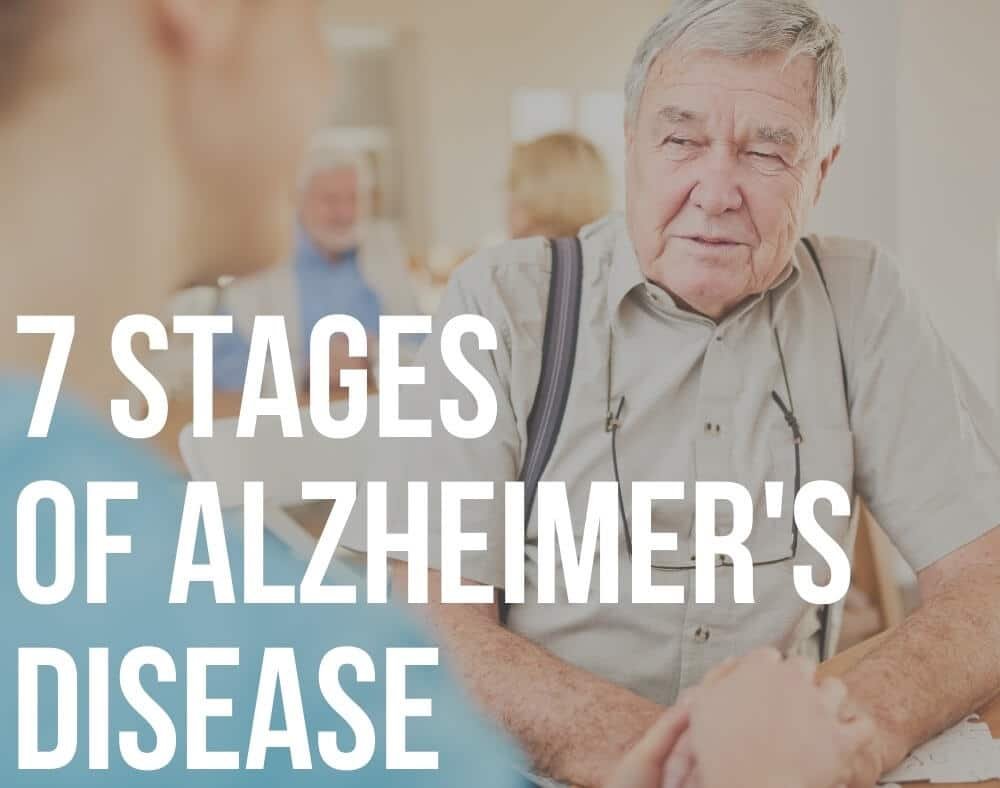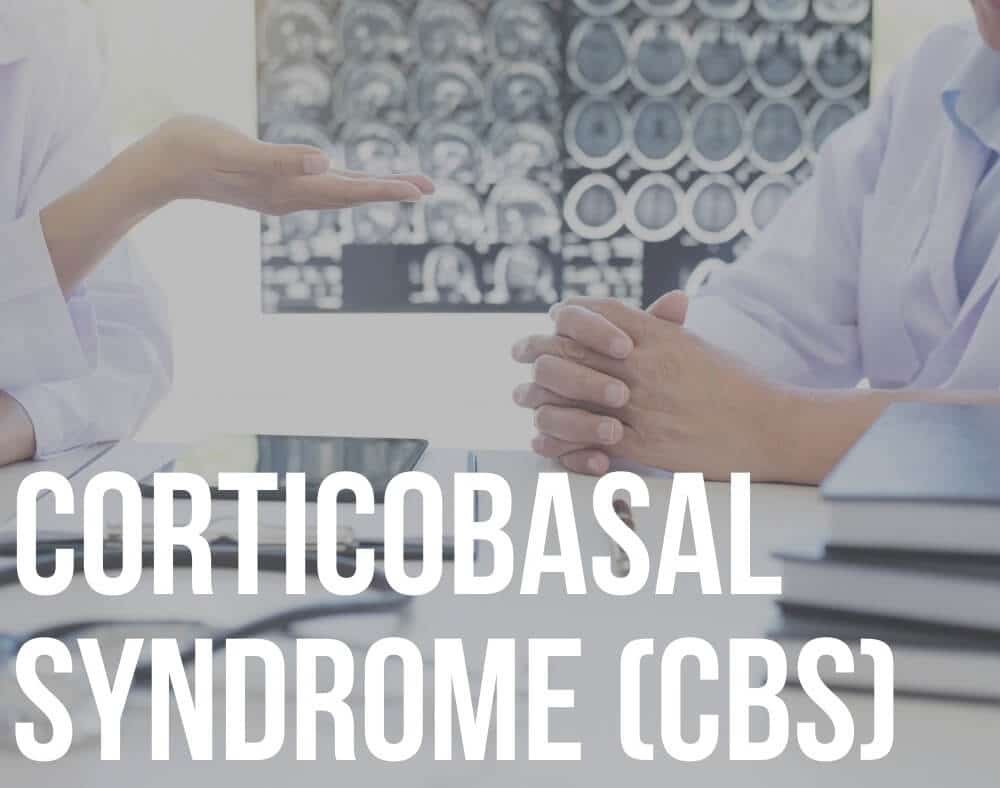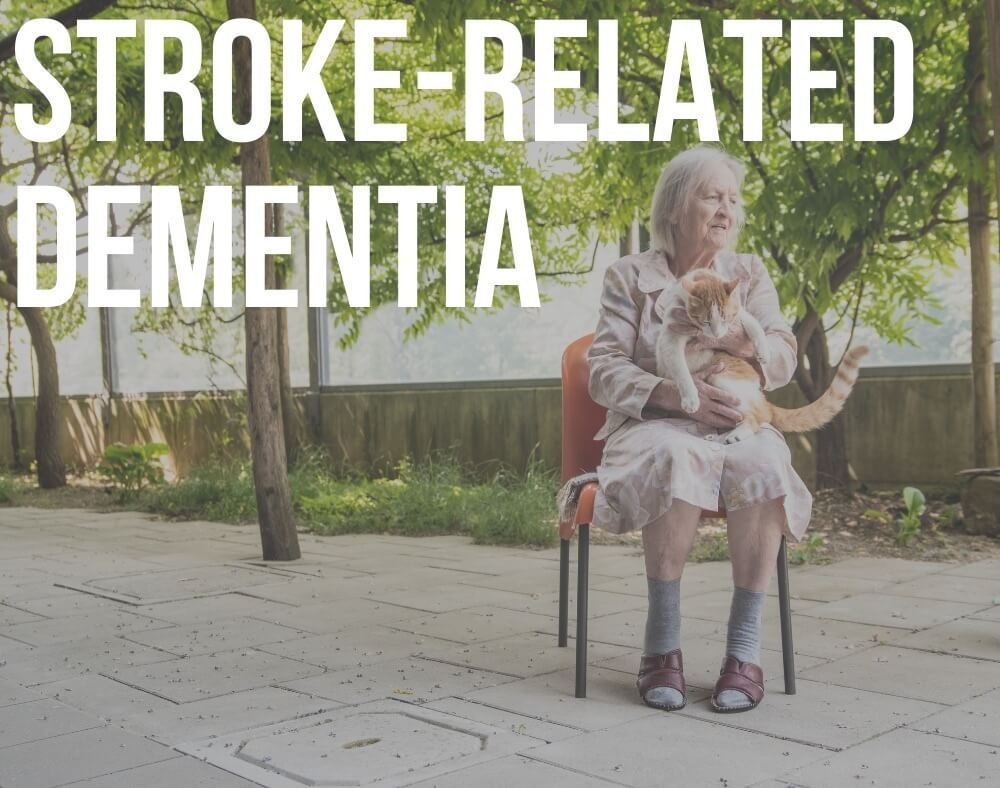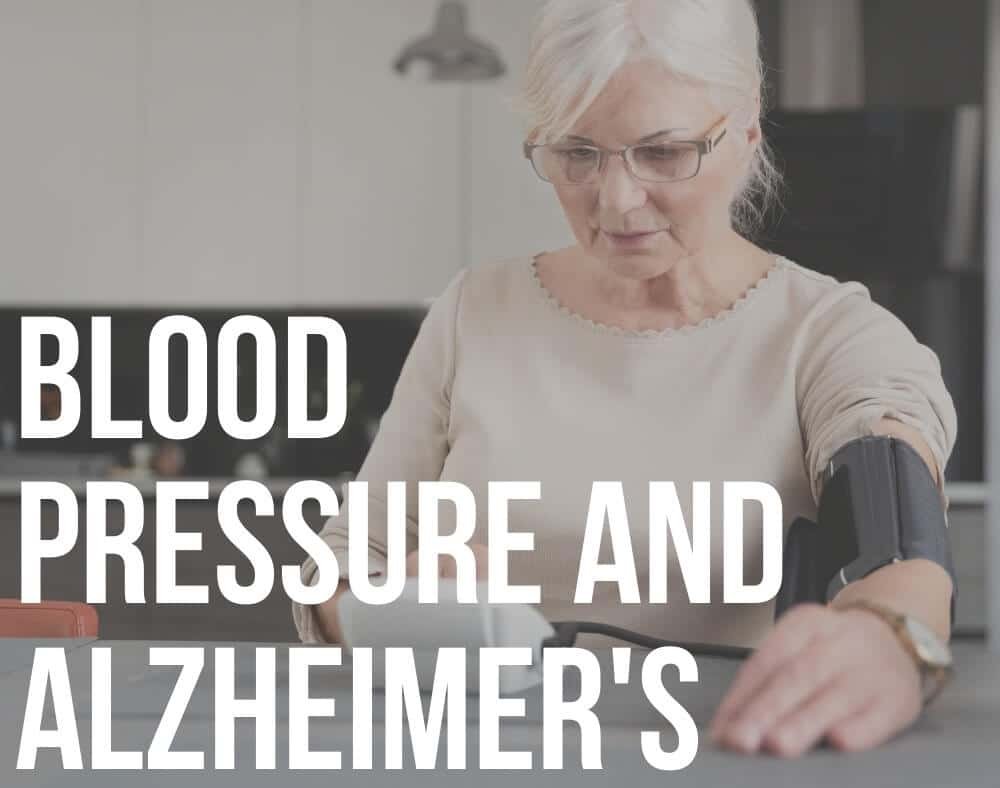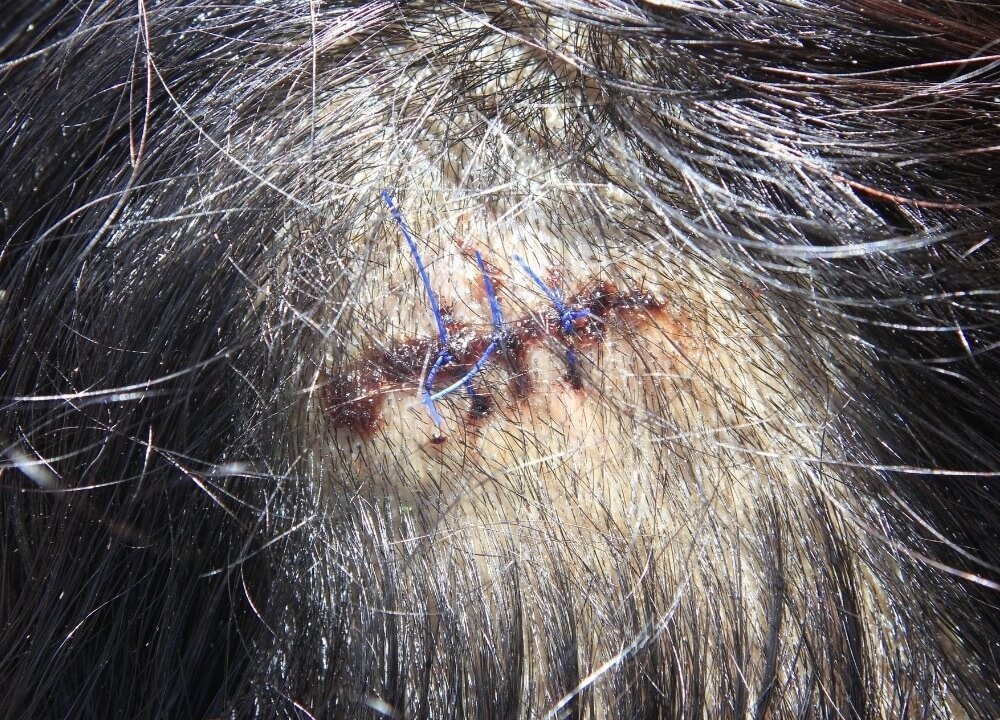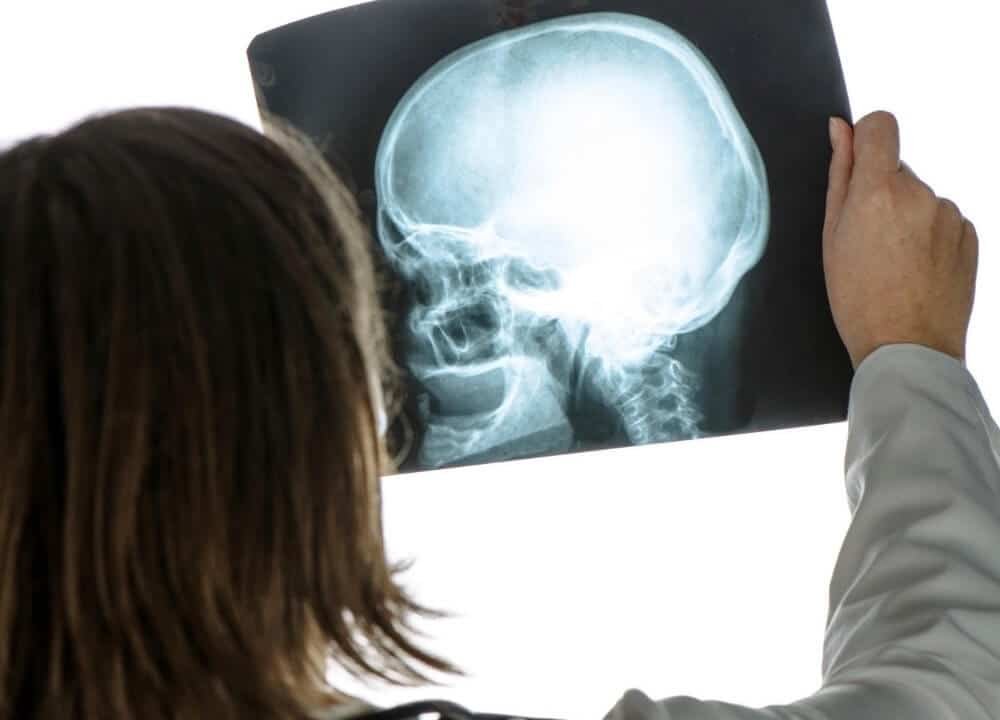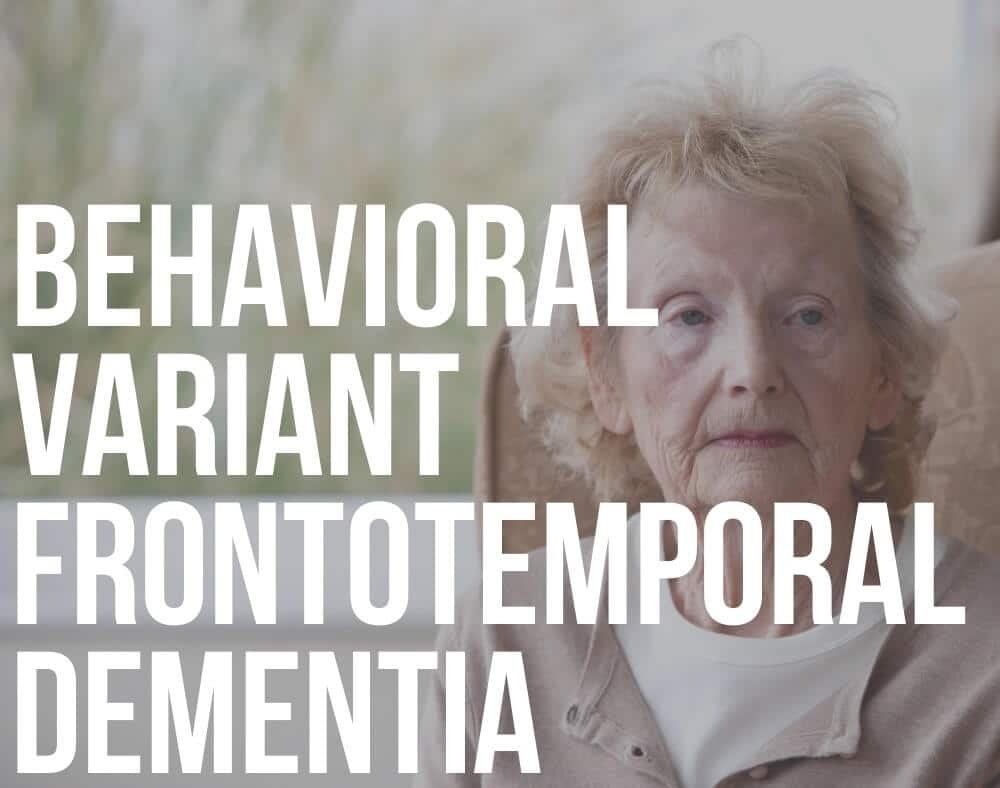People with Alzheimer’s disease (AD) experience the illness differently but research shows that affected individuals tend to go through similar stages of Alzheimer’s from the beginning to the end.
The categorization of the illness is useful when it comes to understanding what to expect to plan for appropriate care and treatment through each stage.
What Are the 7 Stages of Alzheimer’s Disease?
Some professionals use a simple 3-phrase model (early, moderate, and end) while others will use a more comprehensive breakdown that explains the progression of the disease.
The most common system breaks down the progression of Alzheimer’s into 7 stages.
It was developed by Dr, Barry Reisberg from New York University.
Below we will incorporate both systems discussing the three main stages of the disease and its seven sub-stages.
Pre-diagnosis

Also known as preclinical Alzheimer’s, these are the stages of Alzheimer’s that a person goes through before there is an “official” diagnosis of the progressive illness.
Note that changes in the brain usually start years before an individual can showcase any warning signs of the illness.
In the beginning, most people will not have a clue that they have the disease because the symptoms they may experience are usually associated with growing older.
People will continue to function independently at this stage.
There is currently no treatment for the pre-clinical stage of Alzheimer’s.
Experts are, however, hoping that in the future, there will be a medication that can halt the progression before people start showcasing symptoms to prevent the illness.
Let’s take a closer look at what affected persons may experience during the three pre-diagnosis stages.
Stage1: No Cognitive Decline
In the early stage of the progressive illness, most people will not showcase any subjective or objective cognition symptoms or functional decline.
They are also free from any mood or behavioral changes and have what is considered to be normal outward behavior.
Individuals at this stage can be referred to as mentally healthy persons. Alzheimer’s disease at this stage cannot be detected.
Stage 2: Basic Cognitive Decline
The 2nd Alzheimer’s stage is primarily characteristic of forgetfulness that occurs with normal aging.
A majority of people who are over 65 years will experience typical forgetfulness.
Alzheimer’s usually affects people who are above the age of 65. Elderly persons may no longer recall names as they would when they were younger.
Some may forget where they had placed their purse, keys, glasses, or other things around the house.
Many people in this stage will perform well on memory tests be able to go on working, drive, and be social.
The symptoms are normally not noticed by the individual, their family, or physicians.
Stage 3: Mild Cognitive Decline
Certain symptoms are common in the 3rd stages of Alzheimer’s.
For instance, a person with mild cognitive decline may find it hard to concentrate or focus on something.
Most people will also experience increased forgetfulness. If an individual is working, their performance at the workplace may be compromised.
People who stay at home may experience decreased performance in household chores like cleaning or even staying updated with paying bills.
Learning a new skill at this point becomes difficult. People may get lost in familiar places and they can find it challenging to find the correct words to speak when having a conversation.
Someone with stage 3 Alzheimer’s may frequently lose their possessions including prized items.
In this stage, a person’s family may begin to notice the changes that are happening in their loved one’s life.
The affected person may not do too well on memory tests and doctors can detect impaired cognitive function.
This stage can last up to seven years and the symptoms may start to be clearer in 2-4 years.
A person may need professional counseling at this stage especially if they have been conducting complex job responsibilities.
Most people will experience mild to moderate denial and anxiety during the 3rd stage of AD.
It is best to consult a physician during this point so that they can come up with care planning and treatment options that will keep the symptoms at bay.
Early-Stage Alzheimer’s

Also known as early-onset AD, this is one of the stages of Alzheimer’s where physicians can diagnose the disease.
The professionals use a combination of medical and neurological exams as well as imaging tests to help in the diagnosis process.
A team of different doctors like neurologists, geriatricians, psychiatrists, and psychologists among others can work together to help diagnose AD.
Stage 4: Moderate Cognitive Decline
Individuals at this stage will start to have more challenges with daily tasks. Denial of symptoms is usually more evident in this stage.
Some people will also have socialization issues where they withdraw from their relatives and friends.
This is mostly because they begin to be aware of the changes happening.
Other warning signs prominent in this stage include:
- Having poor short-term memory
- Decreasing awareness of recent or current events
- Having challenges with simple arithmetic
- Forgetting details about life history
- Having difficulties paying bills and managing finances
- Decreased emotional response
- Having challenges cooking or even ordering from a menu
- Forgetting about the season or month
- Vision loss can also happen in some individuals. It can be as simple as having a hard time reading
- Personality and mood changes may also occur some of the most noticeable ones being depression, confusion, fearfulness, and anxiety
- Some individuals may also become increasingly irritated when something out of the norm happens.
This stage lasts about 2 years.
Individuals at this stage may need assistance from caregivers. Carers can lend a hand with day-to-day chores and making sure affected persons are well-fed and safe.
This includes looking out for them to ensure no one takes advantage of them financially because many affected individuals can become victims of financial scams.
Some affected adults may not be fit to drive and caregivers should ensure they do not get behind the wheel and endanger their lives and those of others.
Middle-Stage Alzheimer’s

Middle stage (mid-stage) AD consists of the fifth and sixth stages of Alzheimer’s that we will discuss below.
Stage 5: Moderate/Severe Cognitive Decline
In the 5th stage, most people with AD will have significant memory impairment.
Memory loss can either be moderate or severe.
It is usual for some people to forget major bits of details that affect their day-to-day lives such as phone numbers or home addresses.
Many people are unable to tell what time it is or where they are. It is one of the reasons many people in the 5th stage will get lost even after visiting a place they were once familiar with.
Affected individuals might require help with daily living activities like preparing meals, eating, bathing, and grooming.
Most people at this point will also have a hard time dressing.
It is common for a person to pick the wrong clothing for the season. For instance, an individual can insist on wearing summer clothes during winter.
Some individuals will start to wear the same outfit day in day out unless someone reminds them to change.
Caregivers can help out with dressing by laying out clothes for the day on a person’s bed. Depending on the level of independence, carers may have to dress up the person so that the individual with Alzheimer’s is always in proper attire.
A decline in personal hygiene habits may become more noticeable. For instance, a person may not brush their teeth or practice bathroom hygiene.
This stage can last an average of one and a half years.
Stage 6: Severe Cognitive Decline
The 6th stage of AD marks the point of the illness where many affected people will require more help with their daily tasks.
Taking a bath becomes challenging where persons cannot adjust the temperature of bathwater or handle other aspects of bathing.
Persons in this stage normally have limited memory of past and recent events.
Most will not remember the name of the school they went to or life events like their first job and the place where they were born.
Some retain details about their names but they may begin to confuse the names of people they are close to.
For example, a person may call their spouse the name of a deceased parent or use a different name to address someone they know. Most people in stage six might also start to experience incontinence of the bladder or bowel.
Speech ability may also start to diminish.
At this stage, personality changes become more pronounced. Individuals may experience different AD symptoms such as:
The ability to calculate becomes challenging where even a well-educated person may not be able to count backward from 10 to 0.
Some people may start to wander at night and sleep more during the day.
The stage can last for around two and a half years.
Caregivers at this stage can offer help with personal care from hygiene to daily tasks.
Late-Stage Alzheimer’s

After going through the middle stages of Alzheimer’s persons with the disease will go through the final and last stage of the illness.
This is the 7th stage which is also known as late-stage AD. Read on to find out what affected persons can expect from this stage.
Stage7: Severest Cognitive Decline
At this stage, most people with AD lose their ability to communicate. Research shows that for most individuals, speech is limited to 6 words or fewer.
After sometime speech will decline to a single recognizable word before it is lost.
For survival, they usually require help with most daily activities including bathing, toileting, eating, and other activities around the clock.
Stage 7 is also associated with loss of psychomotor capabilities implying individuals at this stage may require help with ambulation and some might not be able to walk at all.
Affected individuals normally lose their ability to smile and instead they only have grimacing facial movements.
After a while, individuals may also lose their ability to hold their heads without support and others are not able to swallow.
Body movements tend to become more rigid which can cause severe pain to the affected persons.
Healthline reports that at least 40% of persons with AD form contractures, or hardening and shortening of tendons, muscles, and other tissues.
It is also common for adults to develop infantile reflexes such as sucking.
As cognitive and memory skills continue to become worse, individuals may require extensive care.
At some point, caregivers may have to consider support services like hospice care that will offer dignity and comfort at the end of life.
Although engagement is minimal during the end stages of Alzheimer’s persons with the disease can still benefit from interactions like a gentle reassuring touch or listening to relaxing music. This final stage normally lasts for about 2 and a half years.
Most people with AD will succumb during this stage.
Persons in this stage are usually vulnerable to developing other medical conditions that can lead to their death such as pneumonia, cancer, heart disease, or stroke.
Some individuals survive for years in this stage with proper care and life support.
Stages of Alzheimer’s Closing Remarks
It is important to learn how Alzheimer’s unfolds through various stages of Alzheimer’s.
While these stages do not always fall into neat little boxes and the symptoms may vary from one person to the next, they can be beneficial in taking care of a person with the illness.
It helps in preparing for the challenges that come next by getting the necessary medical supplies and aids like wheelchairs.
It also helps to identify care facilities like assisted living when an affected person can no longer live on their own safely.
AD is a progressive disease that gradually becomes worse over 4-20 years. However, a majority of affected persons will live for about four to eight years after diagnosis.
It is challenging for people with the disease and their loved ones to go through the stages of the illness. Knowing what to expect during these stages can help ease stress and unpredictability.

